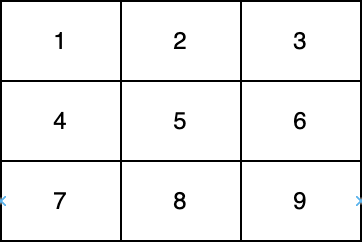Description
You are given a 0-indexed two-dimensional integer array nums.
Return the largest prime number that lies on at least one of the diagonals of nums. In case, no prime is present on any of the diagonals, return 0.
Note that:
- An integer is prime if it is greater than
1and has no positive integer divisors other than1and itself. - An integer
valis on one of the diagonals ofnumsif there exists an integerifor whichnums[i][i] = valor anifor whichnums[i][nums.length - i - 1] = val.

In the above diagram, one diagonal is [1,5,9] and another diagonal is [3,5,7].
Example 1:
Input: nums = [[1,2,3],[5,6,7],[9,10,11]] Output: 11 Explanation: The numbers 1, 3, 6, 9, and 11 are the only numbers present on at least one of the diagonals. Since 11 is the largest prime, we return 11.
Example 2:
Input: nums = [[1,2,3],[5,17,7],[9,11,10]] Output: 17 Explanation: The numbers 1, 3, 9, 10, and 17 are all present on at least one of the diagonals. 17 is the largest prime, so we return 17.
Constraints:
1 <= nums.length <= 300nums.length == numsi.length1 <= nums[i][j] <= 4*106
Solution
Python3
def build(n):
primes = [True] * (n + 1) # create a boolean list of all numbers from 0 to n, assume all are prime
primes[0] = primes[1] = False # 0 and 1 are not prime
for i in range(2, int(math.sqrt(n)) + 1): # iterate over all numbers up to the square root of n
if primes[i]: # if i is prime
for j in range(i*i, n+1, i): # mark all multiples of i as not prime
primes[j] = False
return primes
p = build(4000001)
class Solution:
def diagonalPrime(self, nums: List[List[int]]) -> int:
N = len(nums)
res = 0
for i in range(N):
if p[nums[i][i]]:
res = max(res, nums[i][i])
if p[nums[i][N - i - 1]]:
res = max(res, nums[i][N - i - 1])
return res